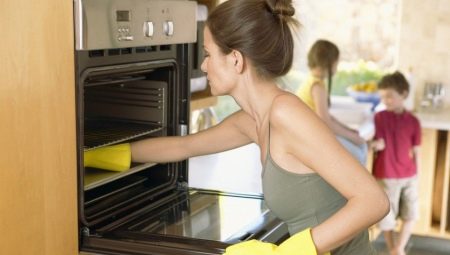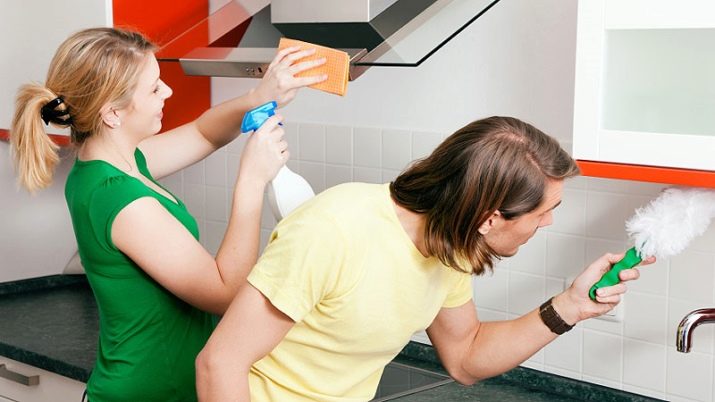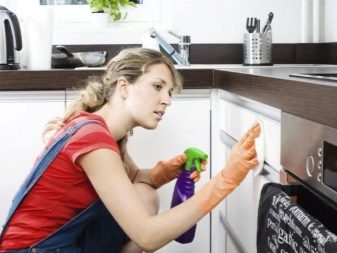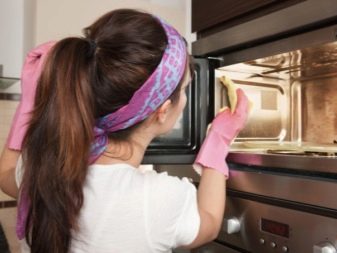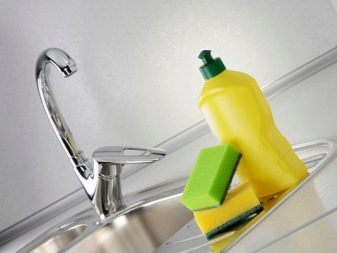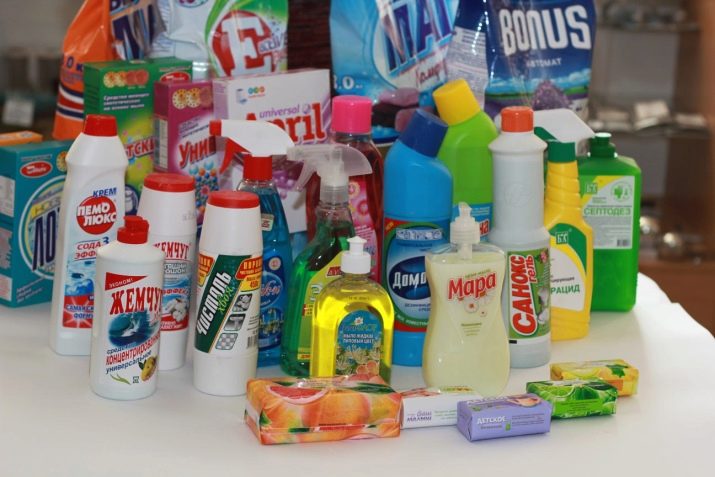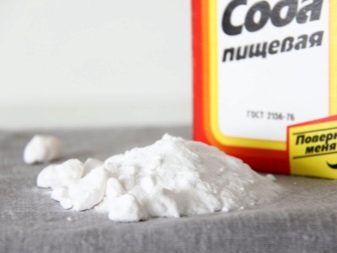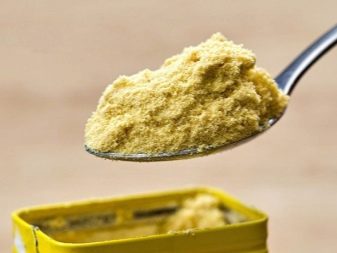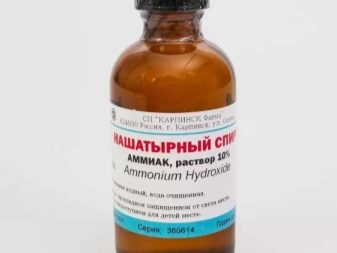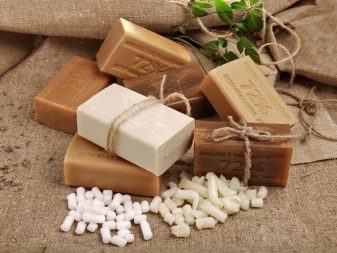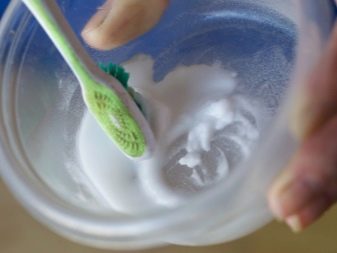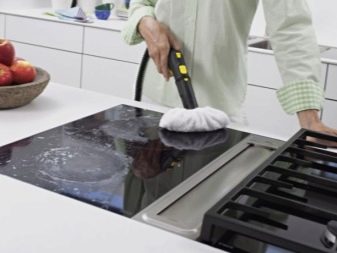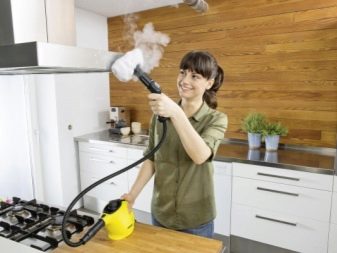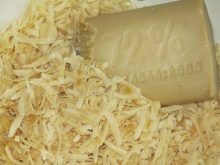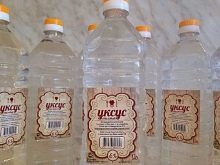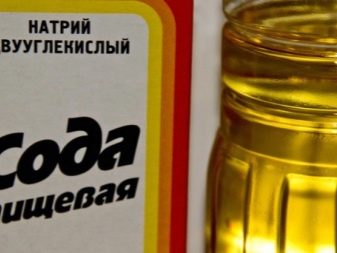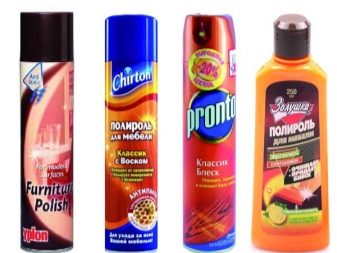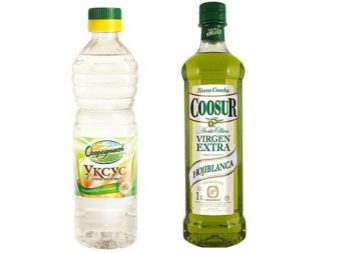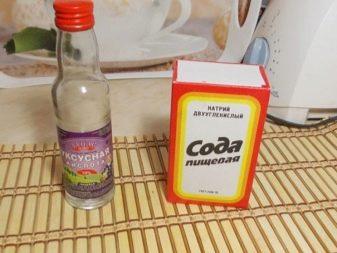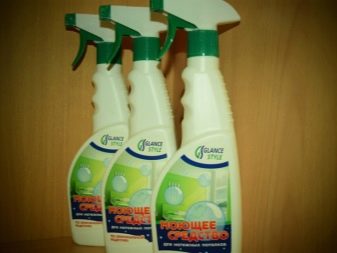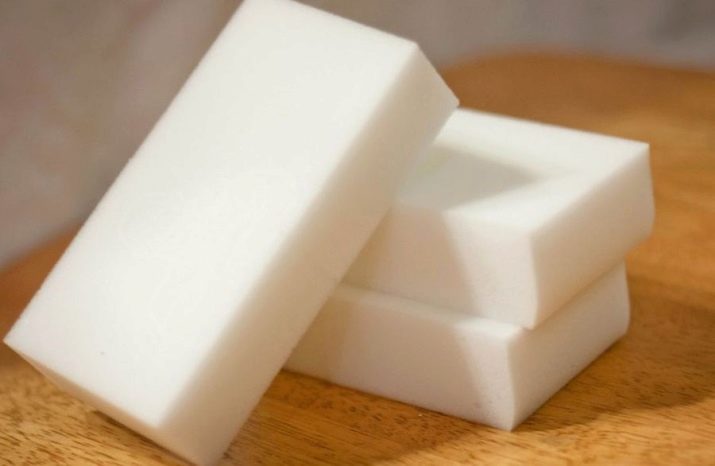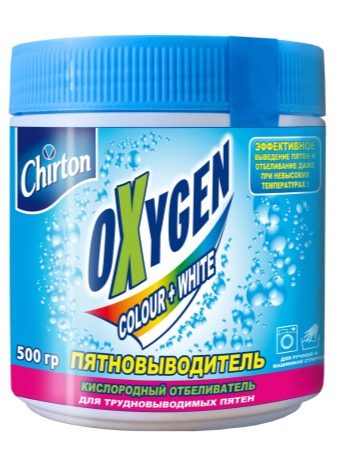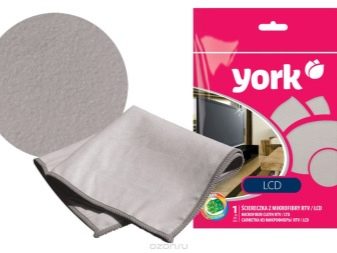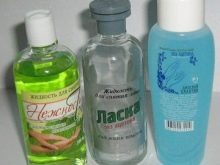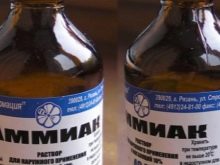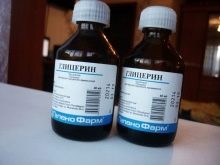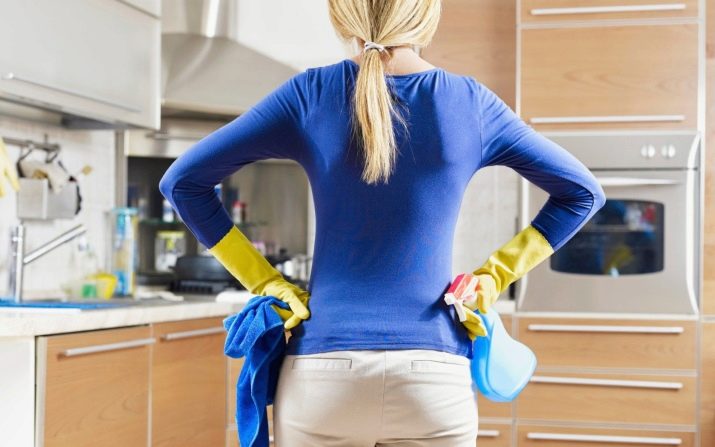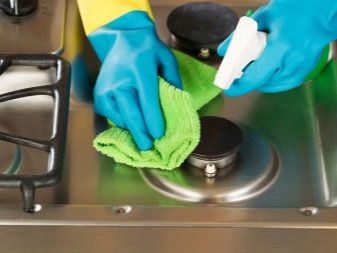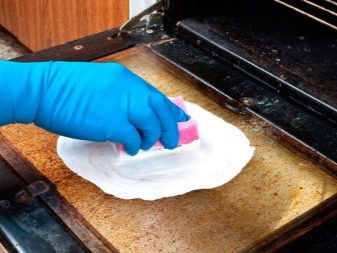The kitchen is a place where everyone feels good and comfortable. Having hardly woken up, we hurry there to drink a cup of the strong invigorating coffee or fragrant tea. It is here at dinner that the whole family gets together. Until late evening, each of the household more than once looks at the kitchen in search of something tasty.
In order to maintain cleanliness in the most popular room in the house, you need a lot of strength and patience, because fat and soot settle on almost all surfaces.
What are the spots?
The appearance of numerous stains in the kitchen is, of course, justified. Even with the hood, omnipresent fat settles while cooking on furniture, curtains, window sills, a desk, and even a TV screen. Being covered with dust, the layer of fat not only looks, to put it mildly, not aesthetically pleasing, but also serves as an excellent medium for the reproduction of microbes and bacteria.
Unfortunately, there is no universal remedy to combat various types of contamination on all surfaces. If you want the kitchen to sparkle and shine, you will have to look for a special approach to each material.
To clean the kitchen from dirt is easy. Perhaps the most troublesome are greasy stains. They adorn both on household appliances, and on furniture, and on a table-top. If it is not possible to wipe them in time, the problem becomes more complicated, because it is much more difficult to wash off the old fat. Often it is necessary to look for and means of removing limescale, which covers the faucet and the metal sink with an ugly gray crust.
Facilities
To eliminate fat in the kitchen, all the achievements of the chemical industry are called upon. They really quickly and effectively remove pollution. If you use them in accordance with the instructions, problems with damage to surfaces can be avoided.
Many hostesses for fear of potential harm from the use of household chemicals prefer traditional methods. The very fact that popular recipes have been preserved in our age of high technology, speaks of their effectiveness. It should be remembered that they are also far from harmless for the surfaces being cleaned, therefore you need to be absolutely clear about what means you can clean this or that material.
For example, the popular recipe for cleansing from fat with soda is absolutely not suitable for glossy and polished surfaces. Soda - albeit soft, but still an abrasive, able to leave serious scratches.
Purchased formulations
A variety of means-fat removers not only amazes, but also extremely difficult to choose. There are quite budget options and quite expensive funds. Under different brands often hide very similar in composition products. It should be noted that any manufacturer has the means intended for different types of surfaces: cleaning glass, metal, furniture, plastic, etc. Before applying a specific gel or paste, you need to carefully study the instructions for use.
Universal detergents, of course, are also on the market, but they should also be used with care so as not to spoil the furniture, the ceiling or the laminate.
Aggressive household chemicals can harm not only the kitchen surfaces, but also the health and beauty of the hostess. Therefore, the delicate handles are closed with rubber gloves, and when working with some tools you can’t do without a mask due to the strong smell.
Folk methods
There are a lot of folk remedies for getting rid of fat in the kitchen, because all the abundance of household chemicals struck us not so long ago.Our grandmothers perfectly knew how to maintain cleanliness without any newfangled sprays and gels.
Folk remedies attract with their safetyAfter all, household chemicals aggressively affects both the skin of the hands and the surfaces to be treated.
Many people know the ability of baking soda to perfectly break down fat. A slurry of soda and water is applied to the contaminated surface, left for a quarter of an hour, then wiped with a damp cloth. Mustard powder is also effective. It is poured on the surface moistened with water, left for the same period of time, then washed off.
Lemon juice and soda do an excellent job with cleaning the oven and microwave. Vinegar can also degrease the surface. If you add a few drops of lemon juice to it, the kitchen will become not only cleaner, but also filled with a wonderful citrus aroma.
To remove the old fat from the tile, it is enough to wipe it with liquid ammonia diluted in water. In order to clean the wooden kitchen set, make a slurry of salt and vegetable oil. Plastic is treated with hydrogen peroxide, which is applied to contaminated sites for 10 minutes, then wash off well.
Many housewives use tooth powder and laundry soap to clean kitchen surfaces.
Surface Features
Before we do general cleaning, we have to determine which surfaces to deal with in the kitchen.
If purchased detergents are used, it is necessary to carefully read the instructions for use, otherwise, instead of the radiant cleanliness of the kitchen, it is easy to get spoiled furniture. Folk remedies are also not so harmless and are not suitable for all surfaces.
"Heavy artillery" in the form of a steam cleaner is contraindicated for furniture from MDF. Steam and heat will definitely destroy such a set, it will swell and exfoliate. But wood, plastic, tile and even the joints between the tiles, it may well lead in perfect order.
Kitchen cabinets of MDF can be covered with PVC film, painted or laminated. Depending on the type of facade you need to choose a detergent.
Laminated boards can lose their luster, if you make maximum efforts to wipe the stain. A large amount of moisture can lead to delamination of the material. To use soda for cleaning such cabinets is absolutely not recommended. The most innocuous way to care for them is to wash them with laundry soap dissolved in water.
The PVC film is not so bad moisture, but you should not try on such surfaces detergents, which include acetone and other solvents. An interesting solution is to combat fat with clay and vinegar, diluted 1: 2.
Acids, solvents, chlorine and abrasives are not suitable for furniture made of MDF with painted surfaces. In addition to clay and soap, you can use a mixture of baking powder and vegetable oil or oil and soda. Not bad cope with the removal of oily stains and mustard powder. By the way, it is suitable for absolutely all surfaces.
Do not rub much grease stains, because even it can scratch the surface. These tips apply to fashionable furniture with a patina.
Vodka diluted by half with water will help bring back the former gloss to the glossy kitchen. Sometimes vinegar is added to it. For this purpose, you can also add 1 tablespoon of ammonia to 1 liter of water. Gloss should be thoroughly wiped with a dry cloth so that no stains remain.
Caring for wooden furniture is quite complicated, but the beauty of natural wood is worth it. Too much moisture will damage the wood worktop and cabinets, so you need to be very careful when washing. From natural products suitable mustard powder, laundry soap and rice water. The latter is sprayed with an atomizer, and then wipe dry with a towel. True, such a tool is not able to remove old fat.
In order to preserve the appearance of the wooden headset as long as possible, do not neglect the polish.Wax not only masks scratches and abrasions, but also protects surfaces from moisture and grease.
From folk remedies a mixture of vinegar and olive oil is popular, which must be rubbed across scratches.
It is also not easy to care for plastic surfaces. If the detergent contains acid or bleach, the plastic may lose color, and the abrasives will scratch. Ordinary dishwashing detergent, rice water, laundry soap and mustard powder will easily cope with grease stains. Melamine sponges also clean plastic panels well.
To part with the fat on the glasses will help the tool for washing windows and mirrors, or a mixture of soda and vinegar. So that there are no divorces on the glass, you can wipe it with an unnecessary newspaper.
In order to get rid of fat on the ceiling, you need to choose the right tool. Stretch ceiling can be washed with a slightly warm solution of soap, in any case without pressing on the suspended structure! Only soft sponges or flannel will do.
For the best result it is worth buying polishes for tension surfaces, as well as alcohol-containing products for facing materials.
Ceiling tiles are of different types. Non-laminated tiles cannot be cleaned at all, it can be wiped with a dry cloth, dust can be removed with a vacuum cleaner, and a normal school eraser can cope with heavy dirt. Laminated tiles can be washed with soapy water, and the mirror and glass tiles can be washed with glass cleaner. The ceiling, covered with water-based, you can also try to wash with a weak soap solution with the addition of soda, but there is a high probability of the appearance of stains and stains.
Fat caught on the wall, too, gives a lot of trouble. If the walls are painted with paint, you can use detergents that break down grease. For wallpaper on the walls of this method is not suitable. Even washable wallpaper is difficult to wash off the old fat, it is absorbed into the very structure of the material. But you can remove the children's creativity from the wallpaper using melamine sponge.
A practical solution that many hostesses choose is a tile apron. Despite its apparent strength, it is easy to damage with aggressive abrasives, with solvents, metal wool, etc. It is perfectly washed with folk remedies. It is enough to finish soda into the water, spray it with a spray bottle. Then pour 20 ml of vinegar in one liter of water and spray this composition. After the reaction has passed and the bubbles disappear, you will need to wipe the tiles dry. Well proven and a mixture of lemon juice, vinegar and vodka.
The usual whiteness not only removes the tile, but also whitens the seams between the tiles; 10-20 ml of this product is enough for one liter of water. With oxygen and grease on tile, oxygen oxygen bleaches are also doing quite well.
In order to grease stains disappeared from the laminate, you can use special detergents designed to care for such a floor. Another option is to try to cool the stain using an ice bag and then scrape it off with a plastic scraper.
If linoleum is lying on the floor, clean away any products with abrasives, chlorine, alkali, soda, solvents and bleaches. They will suffer not only the color of the material, but also its structure.
Soapy water will be enough to wash off the fat. Glitter linoleum returns ordinary linseed oil.
But you should not wash the TV from fat by folk remedies. It is better to wash the body with a plastic cleaner, preventing moisture from entering inside. To wipe the screen, useful special wipes.
With oilcloth fat is easily removed with warm soapy water. After such a cleaning, wipe the surface dry.
Fat and soot remain even on the sockets. They can be washed, having previously disconnected electricity in the apartment or having removed plastic parts. In the first case, the rag must be very strongly wrung out so that not a drop of moisture gets into the socket.
And even in this case, it is better to give the outlet to dry well before using it.
In the second case, you can safely wash them in the sink. Wipe grease from the outlets capable of removing nail polish. Today, few people wash their curtains with their hands, but before the machine wash you can try to remove grease stains from tulle, treating it with a mixture of glycerin and ammonia in equal proportions.
How to quickly wash?
The fastest way to clean the kitchen from fat - regular cleaning. Clearing old fat is much more difficult than erasing newly formed spots and droplets. No matter how trite it may sound, the time spent on daily wiping surfaces from grease and soot is more than compensated for when there is no need for general cleaning. A sticky greasy deposit just won't form. In practice, this condition is not always feasible, because most of us live in the framework of the eternal lack of time.
Wash the kitchen from grease, wash without glass stains, stretch, glossy surfaces not as hard as it sounds.
The main thing - do not rub until the seventh sweat hated spots. So the furniture can suffer, and patience for a long time is not enough. You just need to give time to work household chemicals or homemade products.
Than to clean the surfaces covered with fat - synthetic means or simple grandmother`s ways - to solve to the mistress. Each of them has its strengths and weaknesses.
Tips
Here's what the hostess needs to know:
- Starting to clean, do not neglect reading the instructions for cleaning products and carefully study people's tips. Unpleasant surprises in the form of scratches, scuffs, bleached stains are not needed by anyone.
- Do not use a product designed for cleaning a completely different surface. At best, you will not achieve the expected effect, at worst - spoil the coating.
- Remember about safety precautions: getting cleaning solution in the eyes is an extremely unpleasant situation. Especially often this happens when washing walls and ceilings. Rubber gloves, a mask when working with particularly aggressive formulations is a real necessity.
- Do not use metal sponges, scrapers, etc. Only special napkins, flannel, cloth are suitable for cleaning.
- Thoroughly rinse detergent, especially on surfaces that come into contact with food.
- Use the maximum means of protecting the kitchen surface from the deposition of fat: various polishes, etc.
Proper and timely care of the kitchen will allow her for a long time to please the owners with her impeccable appearance, and the hostess will have time to prepare her favorite delicious dishes.
On how to clean the kitchen from fat, see the following video.
